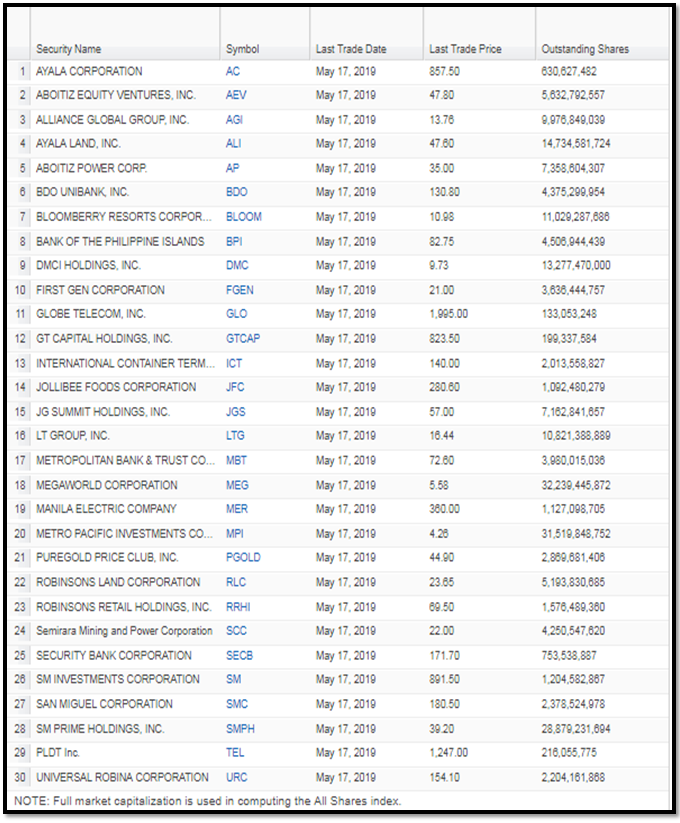The Philippine Stock Exchange Composite Index (PSEi), formerly called Phisix, is a fixed basket of thirty (30) common stocks of listed companies, carefully selected to represent the general movement of the stock market. In other words, it is the benchmark measuring the performance of the Philippine stock market.
The selection of these companies is based on a specific set of criteria. Under the revised policy on index management, companies should meet three (3) criteria to qualify under the PSEi:
1. The company’s free float level must be at least 15%.
2. The company must rank among the top 25% in terms of median daily value in nine out of the twelve-month period in review.
3. Ranking of TOP 30 qualified companies based on full market capitalization.
The Philippine Stock Exchange reviews the composition of the Index twice a year.
The PSEi Total Return Index (PSEi TRI), gauges the overall return on the index, factoring both capital gains and dividend payments, if these dividends are reinvested back into the index. The PSEi TRI is composed of the same constituents as the PSEi Index series. It is subject to the same review dates, recomposition, and rules on removal and replacement of members. The Total Return Index (TRI) is computed at the end of each trading day, and published in the PSE website no later than 5:00pm.
What is the difference between the PSEi and PSEi Total Return Index (PSEI TRI)?
Investors benefit from stock through two main sources: stock price appreciation and dividends. When reinvested over time, dividends can make a significant difference in an investor returns. The PSEi as a price index focuses on capital gains or losses brought about by the price movements of the index constituents. It measures the relative changes in the free-float adjusted market capitalization of the 30 largest and most active common stock listed at the PSE.
Meanwhile, the PSEi TRI is computed on a total return basis. The PSEi TRI covers both price performance and income from dividend payments by reinvesting cash dividends according to their respective market capitalization weightings. This provides investor with an alternative way of viewing index returns as if the cash dividends received are reinvested back into the index.
Indices Composition (May 2019)

Reference: Philippine Stock Exchange (Edge & Academy)




